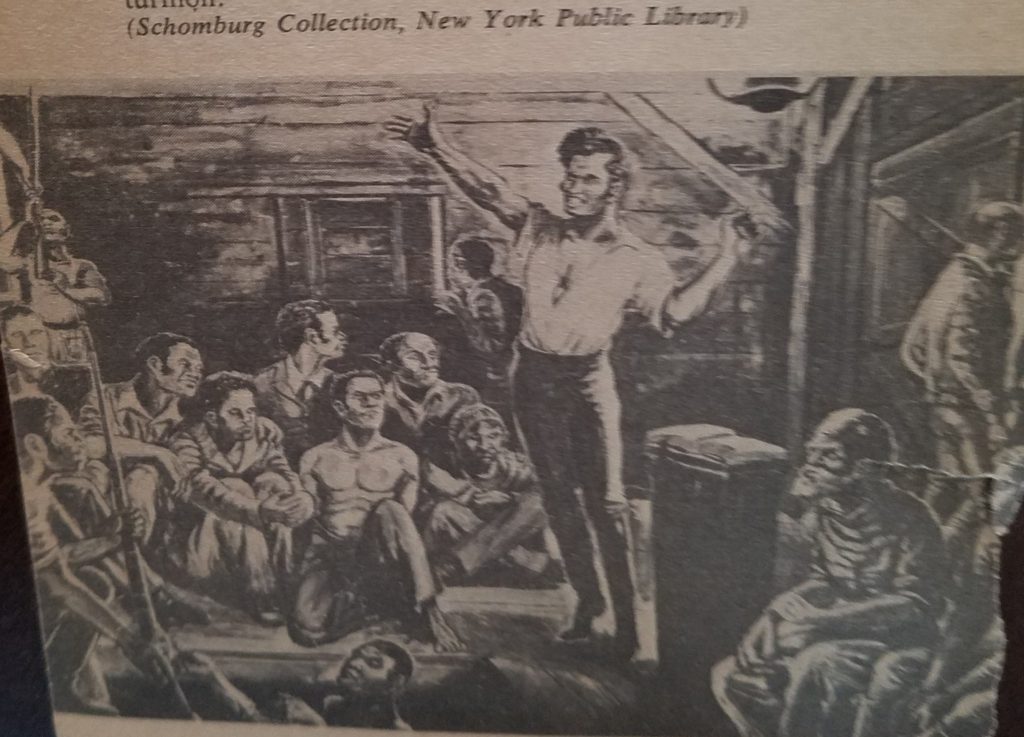American history involves many slave revolts. According to C.L. Lincoln’s book, The Negro Pilgrimage in America, between 1663 and 1864, there were at least a hundred and nine separate slave revolts on land. Between 1699 and 1845, fifty-five revolts took place on slave ships at sea. According to historians, the first recorded slave revolt in the U.S. happened in Gloucester, Virginia in 1663. This revolt involved White indentured servants and Black enslaved people. The first recorded all-Black slave revolt occurred in Virginia in 1687.
In New York City, there was a massive slave uprising in the spring of 1742. Several whites were shot and buildings set on fire. Twenty one Black people were executed for revolting. In 1741 in Manhattan, thirty one Black people and five White people were executed for participating in this revolt.
Many slave revolts took place in the South. In 1720, several enslaved people were burned to death near Charleston, South Carolina. In 1739, three more slave revolts occurred. To prevent escapes, many enslaved people were shackled, tethered, or hindered by such devices as iron horns and bells.
Historians cite the German Coast uprising as the largest slave revolt in American history. This revolt happened in 1811 and took place along the Mississippi River, north of New Orleans, in an area known as the German Coast. The plan was to destroy sugar cane plantations, free every enslaved person in the state and take control of New Orleans. In January of that year, approximately thirty enslaved people entered their master’s mansion, killed the son while the master fled to warn other plantation owners. Mobs of frantic White people fled to New Orleans. A group of armed planters found the enslaved people. Approximately forty were killed, some were captured and forced to watch the injured get tortured. Others escaped into the swamp and eventually tracked down and killed. The enslaved people who were put on trial for rebellion were found guilty and executed. Their mutilated corpses were put on public display for other enslaved people to see.
In September 1800, eleven hundred enslaved people tried to destroy Richmond, Virginia. Two enslaved men revealed the plot to their master, and the revolt leaders and thirty-three other enslaved people were executed. In 1822, Denmark Vesey of Charleston, South Carolina planned a revolt after twenty-two years of planning and studying the French Revolution. His plan was also revealed by an enslaved person and one hundred and thirty-nine enslaved people were arrested. Forty-seven were executed, including Vesey.
The most well- known slave revolt of the nineteenth century was led by Nat Turner. Lincoln wrote, “What became known as the Southampton County Insurrection was, the most violent slave revolt in the history of this country. Leading a small band of slaves, he descended on Southampton County, Virginia, on the night of August 21, 1831. The first victims were his master and the four household members. The small group grew into a well-armed band of about seventy men. They killed white slaveholders and their families as they encountered them. When the revolt was broken, Turner went into hiding for two months. The entire South was in turmoil, fearing a full-scale revolution. He was captured and executed on November 11, 1831. It took three thousand troops and two months to track him down. Turner’s revolt demonstrated to the whites of America, that many Black people were willing to kill and die to achieve freedom.”
Revolts were the only way Black people could rebel against captivity. Many escaped enslaved people chose to commit infanticide and suicide rather than return to the South.
According to the author of the article Slave Rebellions, “There were approximately two hundred and fifty slave rebellions in the U.S. before slavery was abolished in 1865. Slave rebellions were less frequent in the south because plantations were smaller, white people outnumbered enslaved people, and slavery was rigorously policed.”
The Fugitive Slave Act was passed by Congress in 1850. These inhumane federal laws allowed for the capture and return of runaway enslaved people within the United States. This act strengthened the earlier act of 1793 that was enacted by Congress. The act of 1850, pressured citizens to assist in the recovery of escaped enslaved people and take sides regarding enslaving people. Tensions between the North and South increased, leading to the secession of the South and the Civil War.
Francie Mae. February 28, 2021.
References
C.Eric Lincoln. November 1967. The Negro Pilgrimage In America. Bantam Pathfinder Books.
“Slave Rebellions.” History.com Editors. Website-History.https://www.history.com/topics/black-history/slavery-iv-slave-rebellions. Accessed, February 27, 2021. Publisher, A&E Television Networks. Last Updated, August 21, 2018. Original Published Date, November 12, 2009. History.com Editors.
